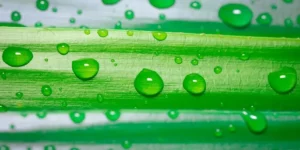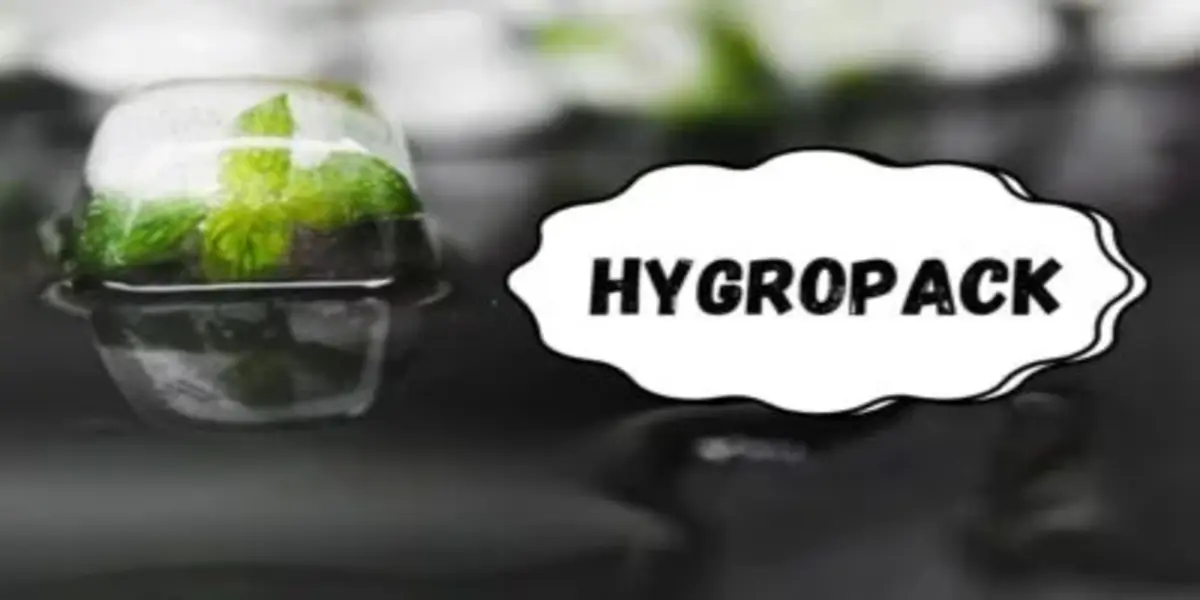Introduction
In an era where consumer safety, product longevity, and sustainable practices are becoming essential priorities, the packaging industry is undergoing a radical transformation. Among the innovations making a significant impact is Hygropack technology. As the name suggests, Hygropack refers to a type of packaging designed with humidity control and moisture absorption at its core. This breakthrough technology ensures that products remain fresh, uncontaminated, and stable throughout their shelf life. From pharmaceuticals to electronics and food items, industries around the world are adopting Hygropack solutions to maintain quality standards and comply with stricter regulations.
Hygropack technology is more than just a moisture absorber. It’s a smart, science-driven solution built on the understanding of how environmental conditions especially humidity can affect sensitive products. It helps extend product life, improve safety, reduce waste, and create packaging that adapts to the needs of modern businesses. This article explores the fundamental principles behind Hygropack, its diverse applications, how it benefits industries, and why it is quickly becoming a staple in smart packaging strategies. Let’s dive into the future of packaging with Hygropack.
What is Hygropack?
Hygropack is a specially designed packaging solution that primarily functions as a humidity control system. It utilizes desiccants and moisture-absorbing materials integrated into packaging formats such as sachets, strips, capsules, or wraps. These materials actively absorb excess moisture from the air within the packaging environment, maintaining a controlled level of humidity and preventing product degradation. What sets Hygropack apart from traditional moisture absorbers is its customization potential and adaptability to specific product needs, such as pharmaceuticals, electronics, foods, and textiles.
The term ‘Hygropack’ is often associated with high-performance moisture control solutions manufactured under strict quality guidelines, especially for use in industries that require absolute protection against humidity-related damages. The core science behind it involves hygroscopic materials like silica gel, activated carbon, and molecular sieves. These materials are chosen based on the moisture sensitivity of the packaged product, ensuring optimal environmental stability.
Importance of Moisture Control in Packaging
Moisture is a silent destroyer when it comes to the longevity and safety of various products. In pharmaceuticals, even a slight increase in humidity can degrade active ingredients, reduce efficacy, and make medicines unsafe for use. In electronics, moisture can lead to corrosion and short circuits. For food items, high humidity fosters microbial growth, spoilage, and reduced shelf life. This is where Hygropack technology makes a significant difference.
By effectively managing the internal environment of the packaging, Hygropack solutions help mitigate the risks posed by moisture. They create a micro-atmosphere that remains stable regardless of external humidity levels. This control is crucial not only for product preservation but also for meeting regulatory compliance in sensitive sectors like healthcare and electronics manufacturing.
Applications Across Various Industries
Hygropack is a versatile solution that serves multiple industries, each with its unique packaging challenges. In the pharmaceutical industry, it is commonly used in blister packs, bottles, and medical device packaging to prevent moisture-induced chemical breakdown. Pharmaceutical manufacturers use strip and sachet Hygropack formats inside containers to provide an added layer of protection.
In the electronics industry, moisture is a major threat to components such as microchips, semiconductors, and circuit boards. Hygropack pouches are often placed inside product boxes to maintain dryness and prevent failures caused by condensation. Similarly, food producers use Hygropack inside dried food, powdered items, or baked goods packaging to preserve taste, texture, and safety.
Other industries such as textile, logistics, nutraceuticals, and even cosmetics also benefit from Hygropack’s effective moisture management. The technology is highly adaptable, making it easy for manufacturers to incorporate it into a wide range of product packaging formats.

Key Components and Materials Used
The effectiveness of Hygropack relies heavily on the choice of desiccant materials and the quality of the packaging design. Common desiccants used include silica gel, which is excellent for absorbing moderate levels of moisture, and calcium chloride, known for its high moisture absorption capacity. Activated carbon is used for odor and moisture control, while molecular sieves are used in ultra-dry applications due to their ability to trap very small water molecules.
These materials are enclosed in breathable paper or synthetic fibers, allowing water vapor to pass through and be absorbed, while keeping the desiccants securely inside. The design ensures there is no contamination or leakage into the product. Packaging is often done using non-toxic, FDA-compliant materials to maintain product safety, especially in consumables.
Customization and Innovation in Hygropack Solutions
Modern Hygropack solutions are highly customizable. Manufacturers can tailor the size, shape, and moisture absorption rate of each pack to meet the needs of specific products. For example, pharmaceuticals might need a lower humidity threshold compared to food products. Manufacturers can specify the required Relative Humidity (RH) level that the Hygropack must maintain, and engineers can design accordingly.
Some advanced Hygropack solutions now integrate color-changing indicators that visually show the level of moisture absorbed. These indicators help users or end customers verify whether the product has remained dry during transportation and storage. This innovation increases transparency and trust in quality-sensitive markets.
More Read: Michael Welsonovich Jr
Environmental Impact and Sustainability
Sustainability is becoming a major focus across all industries, and Hygropack technology aligns well with these goals. Unlike traditional packaging materials that might be non-biodegradable or release toxic chemicals, many Hygropack solutions are made using eco-friendly materials that can be safely disposed of or recycled. Water-based adhesives, biodegradable outer wraps, and reusable desiccants contribute to a more sustainable packaging ecosystem.
Furthermore, by reducing product spoilage and returns caused by moisture damage, Hygropack helps companies minimize waste and improve overall environmental impact. With stricter regulations being enforced globally for eco-packaging, Hygropack offers an efficient bridge between performance and environmental responsibility.
Compliance with International Standards
Hygropack products are typically manufactured in compliance with international safety and quality standards. This includes ISO certifications, FDA approvals for food and drug applications, and adherence to USP and EP pharmacopeial standards. These certifications ensure that Hygropack components are safe, reliable, and effective for use in critical applications.
Additionally, for export-oriented businesses, using certified Hygropack solutions can ease cross-border shipping challenges. Regulatory compliance becomes much easier when packaging follows globally accepted guidelines, reducing the risk of customs rejections or product recalls.
Conclusion
The future of packaging lies not only in aesthetics or branding but in how effectively it preserves and protects the product inside. Hygropack is a testament to this shift in focus offering highly functional, science-backed solutions that address one of the most critical threats to product stability: moisture. Its ability to create a controlled microenvironment within packaging ensures extended shelf life, improved product safety, and reduced waste across industries. Whether it’s life-saving medicines, delicate electronics, or premium food items, Hygropack enhances reliability and consumer satisfaction.
Beyond its functional benefits, Hygropack also stands out as a sustainable and adaptable solution in a world that increasingly values environmental consciousness. As businesses aim to cut losses and improve the durability of their goods, Hygropack emerges as a strategic asset in the packaging process. With innovation continuing to push the boundaries of material science and environmental controls, Hygropack is poised to become an integral part of next-generation packaging systems. Companies looking to future-proof their products should strongly consider incorporating Hygropack solutions into their operations.
FAQs:
What is the main function of Hygropack?
Hygropack is designed to control humidity and prevent moisture-related damage in packaged products by using desiccant materials like silica gel or molecular sieves.
Which industries benefit most from Hygropack?
Pharmaceuticals, electronics, food packaging, textiles, and cosmetics are key industries where Hygropack technology is widely used.
Is Hygropack safe for use in food and medicine packaging?
Yes, most Hygropack solutions are FDA-compliant and manufactured using non-toxic materials suitable for direct contact or inclusion in pharmaceutical and food-grade packaging.
Can Hygropack be recycled or reused?
Many Hygropack solutions are eco-friendly, with biodegradable or reusable components depending on the product design and material used.
How is Hygropack different from traditional desiccants?
While traditional desiccants simply absorb moisture, Hygropack solutions are customized for specific humidity levels, offer better sealing, may include indicators, and often meet higher safety and compliance standards.
FOR MORE DETAILS: Businesstodesk.com


